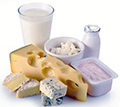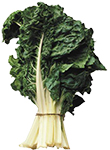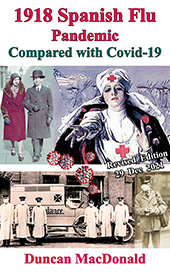Beat High Blood Sugar
|
Duncan MacDonald
Jakarta
13 June 2017
People with diabetes should be eating foods that lower high blood pressure
and high cholesterol, plus reduce excess weight - some of the triggers that likely
contributed to diabetes in the first place.
[1] It is important to limit certin foods & drinks (e.g. soda and candy) but it is vital to pay attention to what you should eat.
 1. Beans
1. Beans
A half-cup of black beans delivers more than 7 grams of fiber to help you feel full, stabilise blood sugar, and even lower cholesterol.
They are also a source of calcium, a mineral that can burn body fat. In 1/2 cup of white beans, you will get almost 100mg of calcium - approx 10% of your daily requirement.
Plus, beans make an excellent protein source that is low in saturated fats - that block arteries and can lead to heart disease.
2. Berries

Berries are nature's candy -but unlike sugary confections from the supermarket aisle, they are loaded with fiber and antioxidents called polyphenols. A cup of Blackberries contains an impresssive 7.6 grams of fiber: Blueberries offer 3.5 grams.
A study found that people with heart disease risk factors who ate berries for 8 weeks had a drop in blood pressure and a boost in HDL (good) cholesterol. [2]

Dairy foods provide an excellent source of calcium and vitamin D - a potent diabeties curbing combination found in; milk, cottage cheese, and yogurt. One study found that women who consumed more than 1,200 mg of calcium, plus more than 800 IU of vitamin D a day, were 33% less likely to develop diabetes than those taking in less of both nutrients. You can get these nutrients from other foods, but none combine them as well as dairy does.
4. Dates

These chewy fruits are plain looking, brown, and a little sticky. But pop one in your mouth and you'll be rewarded with a sweet taste and delightful texture. They are appreciated by anyone breaking a fast.
Their palate-pleasing nature, combined with a generous supply of fiber (7 dates have 4 grams) makes them a perfect diabetes-friendly snack. They also packed with antioxidents - with more per serving than grapes, oranges, broccoli and peppers.
Stuff dates with pecan or walnut halves for a satisfying snack. 5. Green Veggies
Green vegetables are outstanding sources of fiber. Broccoli is an anti-diabetes superhero. As with other cruciferous veggies, like kale and cauliflower, it contains a compound called sulforaphane, which triggers several anti-inflammatory processes that improve blood-sugar control and protect blood vessels from the cardiovascular damage that’s often a consequence of diabetes. (Heart disease is the leading cause of death for people with diabetes, so this protection could be a lifesaver.) Sulforaphane also helps flip on the body’s natural detox mechanisms, coaxing enzymes to turn dangerous cancer-causing chemicals into more innocent forms that the body can easily release.
 Spinach is one of many leafy greens that have been shown to drop the risk of developing diabetes; collards are another great choice. People who consume more than one serving a day of spinach and other leafy greens slashed their risk by 14%, compared to people who ate less than 1/2 a serving daily, found one British study. This green is particularly rich in vitamin K, along with several minerals including magnesium, folate, phosphorus, potassium, and zinc. It’s also a good source of the plant chemicals lutein and zeaxanthin, and various flavonoids. Although spinach is technically a rich source of calcium, another nutrient in spinach called oxalic acid prevents much of that calcium from being absorbed, but you can blanch spinach (boil it for just one minute) to reduce this chemical.
[3]
Spinach is one of many leafy greens that have been shown to drop the risk of developing diabetes; collards are another great choice. People who consume more than one serving a day of spinach and other leafy greens slashed their risk by 14%, compared to people who ate less than 1/2 a serving daily, found one British study. This green is particularly rich in vitamin K, along with several minerals including magnesium, folate, phosphorus, potassium, and zinc. It’s also a good source of the plant chemicals lutein and zeaxanthin, and various flavonoids. Although spinach is technically a rich source of calcium, another nutrient in spinach called oxalic acid prevents much of that calcium from being absorbed, but you can blanch spinach (boil it for just one minute) to reduce this chemical.
[3]This category of veggie is incredibly diverse with choices such as: turnip, mustard and beet greens, plus chard.
Use them in entrees, sandwiches, and salads. Or simply toss mustard, collard, or beet greens with artichoke hearts and saute in olive oil. 6. Lentils
 Lentils, like their bean cousins, are loaded with fiber - 1 cup cooked contains an enormous 16 grams. That same cup also delivers close to 360 mcg of folate, just shy of the 400 mcg that adults need each day.
Lentils, like their bean cousins, are loaded with fiber - 1 cup cooked contains an enormous 16 grams. That same cup also delivers close to 360 mcg of folate, just shy of the 400 mcg that adults need each day.If you are not a meat eater, lentils are a good alternative supply of protein; they also contain a variety of vitamins and minerals. Add to soup and pasta for extra texture, or enjoy as a side dish in lieu of beans.
7. Oats
Like beans, Oats are a diabetic power food, because of their
 fiber content - 1/2 cup of oats provides 4 grams.
fiber content - 1/2 cup of oats provides 4 grams. Research shows that oat lovers can also lower total and LDL (bad) cholesterol, plus improve insulin resistance. All the soluble fiber that oats contain, slows the rate at which your body can break down and absorb carbohydrates, which means your blood-sugar level remains stable.
The easiest way to enjoy oats is straight from your cereal bowl, but you can also sneak oats into all kinds of recipes, from pancakes to meat loaf to cookies. 8. Salmon

Salmon is a rich source of omega-3 fatty acids (3 ounces provides as much as 1,800 mg), healthy fats that reduce the risk of heart disease, reduce your waistline, reduce inflammation. and improve insulin resistance. The American Diabetes Association recomend eating at least two servings of fish high in omega-3s a week. Salmon is is one of the best non-dairy sources of vitamin D and rich in protein, which keeps you full and prevents blood-sugar spikes. [4]

9. Sardines
Getting plenty of fatty, cold-water fish is critical for everyone, but especially diabetics. Sardines are high in omerga-3 fatty acids that slows the absorbtion of blood-sugar when eaten with carbohydrates. Irregular sugar-levels can also seriously damage your heart. 10. Tuna
Another stunning healthy fish, a 3-ounce piece of tuna contains 1,300 mg of omega-3s and a respectable amount of vitamin D.
 But tuna can behigh in mercury, which could cause problems to your nervous system. To be safe, buy canned light tuna instead of albacore, and limit your tuna intake to 12 ounces a week.
But tuna can behigh in mercury, which could cause problems to your nervous system. To be safe, buy canned light tuna instead of albacore, and limit your tuna intake to 12 ounces a week.
11. Walnuts and Almonds
A research study published in 'Diabetes Care' in December 2004 showed that including
 1 oz. of walnuts in the diet of patients with type 2 diabetes, significantly improved their cholesterol profile, reducing risk of heart disease.
1 oz. of walnuts in the diet of patients with type 2 diabetes, significantly improved their cholesterol profile, reducing risk of heart disease.Almonds decrease post-meal blood-sugar surges, according to a research study published in 'Journal of Nutrition' in 2006. The more almonds consumed, the lower the rise in participants' blood-sugar levels after eating. Consuming 3 oz. of almonds with a white bread meal caused a rise in blood sugar of only 1.6 mmol/L, less than half the rise seen after eating a white bread meal only meal.
| Surprising Good Choices - in Moderation
Peanut Butter Some studies have linked peanut butter to reduced diabetes  risk. The fibre content of 2 tablespoons has almost 2 grams, may have something to do with it. This classic comfort food contains mostly monounsaturated fat, its considered heart healthy. It contains a high calory-count so pay attention to the serving size. risk. The fibre content of 2 tablespoons has almost 2 grams, may have something to do with it. This classic comfort food contains mostly monounsaturated fat, its considered heart healthy. It contains a high calory-count so pay attention to the serving size.
Dark Chocolate Rich in antioxidants favonoids, this deceptively d  ecadent sweet may help improve your good and bad cholesterol, plus reduce your blood-pressure. One ounce contains 136 calories and 8.5 grams of fat, so nibble just a little. A great combination; shaved or melted dark chocolate over rasberries or strawberries for a light and healthy dessert. ecadent sweet may help improve your good and bad cholesterol, plus reduce your blood-pressure. One ounce contains 136 calories and 8.5 grams of fat, so nibble just a little. A great combination; shaved or melted dark chocolate over rasberries or strawberries for a light and healthy dessert.
|




